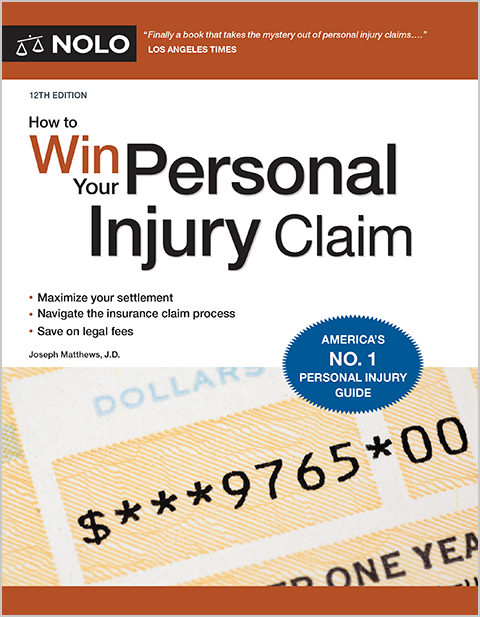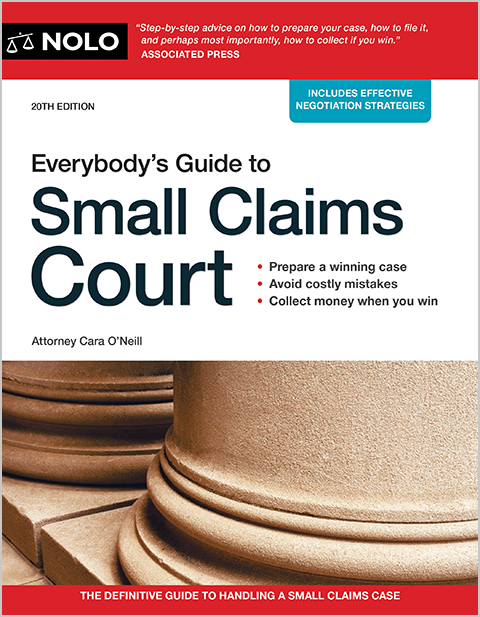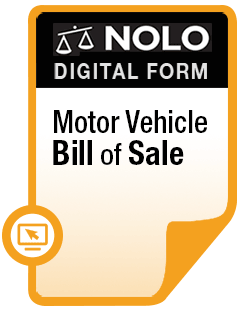Your own no-fault insurance usually covers your injuries regardless of who caused your crash, but a lawsuit against the other driver might still be possible.
When you're involved in a car accident, chances are auto insurance will come into play. In most states, that means the at-fault's driver insurance coverage pays for other people's accident-related injuries and losses. But around a dozen or so states follow some version of a "no-fault" car insurance system. In this article, we'll cover:
- how no-fault car insurance works, including who can file a claim, and what's covered
- when you can step out of the no-fault system and bring an insurance claim or lawsuit against the at-fault driver
What Is No-Fault Car Insurance?
No-fault insurance, also called "Personal Injury Protection" (or PIP) lets drivers file injury claims with their own insurance company after a crash, regardless of who caused it.
Most states follow a liability-based car insurance system. If you're injured in an accident in a liability (or "fault") state, you can file an insurance claim with the company who covers the person who caused your injuries. When you make this type of "third-party car insurance claim," you typically have to prove that the other person was at fault for the car accident.
With a no-fault car insurance claim, you don't have to worry about whether the insurance company will deny your claim over a dispute about who caused the accident. You don't bear the burden of having to prove to an insurance adjuster that the other driver is to blame for the accident, and not you. The no-fault claim process is often more streamlined too.
The big downside of the no-fault insurance system is that you're limited in the kinds of compensation you can collect. More on this later.
Which States Have No-Fault Insurance?
Around ten states follow a traditional "no-fault" car insurance system, where anyone injured in an accident must turn first (and sometimes exclusively) to their own car insurance coverage. Remember, in these states, unless you meet the injury or monetary threshold and step outside of the no-fault system, you won't be able to collect "pain and suffering" damages in connection with the accident and your injuries:
New Jersey, Pennsylvania, and the District of Columbia follow a "hybrid" or "choice no-fault" system. In these states, you can choose whether to be insured under no-fault or the more traditional liability-based insurance system.
Finally, some states (including Delaware and Oregon) require no-fault coverage as an add-on to any car insurance policy, but an injured person isn't limited to pursuing a no-fault claim after an accident.
How to File a No-Fault Insurance Claim: Step-by-Step
If you live in one of the dozen or so no-fault car insurance states, the process for submitting an insurance claim is fairly streamlined. Rather than filing a third-party insurance claim or a lawsuit against the at-fault driver, you submit your claim to your insurance company (or to the insurance company of one of the drivers, if you were a passenger, pedestrian, or bicyclist).
Report the accident to your car insurance company. Do this right away, since your policy likely requires you to promptly report any accident that might trigger coverage.
Start the no-fault/PIP claim process. You'll probably be able to do this online, or through the company's app.
Submit your medical bills and other documentation for payment/reimbursement. The insurance company will for certain financial losses related to your car accident injuries, no matter who caused the accident (see details below on what's covered).
Follow up with any missing records or proof of loss. You're obligated to cooperate with your car insurance company when you're making a no-fault/PIP claim, so if they ask for more documentation of your claimed losses, do what's reasonable in order to get full compensation.
Who Can File a No-Fault Car Insurance Claim?
It's not just drivers who can make a no-fault car insurance claim with their own insurance company. The specifics vary according to state law. But members of a no-fault policyholder's family can usually also make a claim under the policyholder's coverage if they've been injured in a car accident. The same usually goes for passengers who were injured in an accident while riding in the policyholder's car.
Let's look at New York's no-fault rules to see who can make a no-fault or PIP claim after a crash:
- the vehicle owner/policyholder
- anyone driving the vehicle owner/policyholder's car with permission at the time of an accident
- any passenger riding in the vehicle owner/policyholder's car at the time of an accident
- any pedestrian hit by the vehicle owner/policyholder's car, and
- any bicyclist hit by the vehicle owner/policyholder's car.
What Does No-Fault Car Insurance Cover?
After a car accident, you can make a no-fault insurance claim under your personal injury protection (PIP). No-fault coverage varies from state to state, but you'll likely get compensation for:
- medical bills
- lost income (up to a certain dollar limit) if you're unable to work after an accident
- cost of replacement services (if your injuries affect your ability to do housework or drive, for example), and
- funeral costs if someone died as a result of the accident.
What Isn't Covered by No-Fault Insurance?
There are two big categories of car accident-related losses that aren't covered by no-fault insurance:
- your physical and mental "pain and suffering" resulting from your car accident injuries; you'll need to step outside of no-fault and sue the other driver for this kind of compensation (more on this in the next section) and
- your vehicle damage; PIP/no-fault car insurance never applies to your vehicle damage; drivers and car owners typically need to rely on their own collision coverage to cover vehicle damage, or they're free to make a claim against the at-fault driver's liability policy, depending on the circumstances.
When You Can Sue in No-Fault States
Even in no-fault car insurance states, injured drivers and passengers are allowed to step outside of the no-fault system and file third-party insurance claims and car accident lawsuits against at-fault drivers when:
- the accident caused "significant" injury, as defined by state law, or
- the accident resulted in medical bills above a certain dollar threshold.
Understanding the "Serious Injury" Threshold in No-Fault States
No-fault states have their own definitions of what counts as a serious injury in the no-fault system.
For example, if you're injured in an accident in Florida, your mandatory PIP coverage will kick in to pay for your losses, regardless of who was to blame for the accident. But if your injuries are "serious," you can pursue an insurance claim or personal injury lawsuit against the person who caused the crash. Florida's definition of "serious" injury for purposes of this threshold is:
- significant and permanent loss of an important bodily function
- significant and permanent scarring or disfigurement
- permanent injury within a reasonable degree of medical probability, or
- death.
"Serious" injuries under New York's no-fault system include:
- death
- dismemberment
- significant disfigurement
- bone fractures
- loss of a fetus
- permanent damage to organs, functions, or systems, and
- disability lasting at least 90 days during the 180 days following the injury.
(Fla. Stat. Ann. § 627.737; N.Y. Ins. Law § 510(d).)
Understanding the "Monetary Threshold" in No-Fault States
Some no-fault states allow people to pursue an insurance claim or lawsuit when their medical expenses or lost wages exceed a monetary threshold that is set by the individual state.
For example, in Utah, you can pursue a liability claim if you have at least $3,000 in accident-related medical expenses or if you meet the serious injury threshold.
(Utah Code § 31A-22-309.)
Adding PIP Coverage in At-Fault States
So far we've covered no-fault car insurance in the context of state insurance laws and requirements. But most states offer drivers the option of purchasing no-fault or "personal injury protection" coverage (or similar "medical payments" or "MedPay" coverage) on top of more traditional liability-based coverage.
Some states, including Texas, require insurance companies to offer no-fault or personal injury protection coverage to customers who are purchasing a car insurance policy, but the customer is free to decline these optional coverages.
Learn more about how "personal injury protection" car insurance works.
If you're involved in a car accident in a no-fault state, especially if the crash resulted in serious injuries, talk to a lawyer about your options. Learn more about how a car accident lawyer can help.



